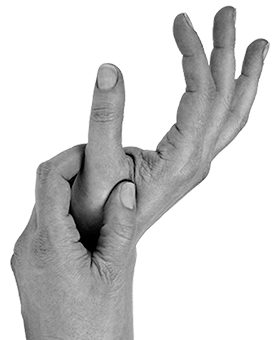Overview
The hand is a fascinatingly complex structure of bones, nerves and muscles that allow intricate and powerful movement patterns with relatively little thought. Muscles in the forearm separate into tendons at the wrist that extend into the hand. Each of your finger’s movements is orchestrated via these cord-like tendons on either side of the hand.
The flexor (or bending) tendons run through the palm of the hand and into the finger tips. These tendons slide through snug sheaths and pulley systems to keep them close to the bone. The tendon glide is what keeps the movement smooth. The flexor tendons have an added layer of complexity in that there are two tendons that go to each finger (but only one to the thumb). If a tendon is cut, it is not uncommon for there to be an injury to the nerve as well, given the close proximity of these structures.
The Extensor (or straightening) tendons run across the back of the hand and fingers and insert onto the end of the middle and distal phalanges (finger bones).
Generally speaking, flexor tendon injuries are more difficult to manage than simple extensor tendon injuries. This is due to two factors. Firstly, the flexor muscles are stronger and more forceful than the extensor counterparts positioned on the other side of the hand. Secondly, there are two flexor tendons in each finger which can have an effect on scarring and tendon glide, thereby decreasing range of motion – if the treatment program is not managed appropriately.
Symptoms
Flexor Tendons
Flexor tendon injuries are generally the result of a deep cut or puncture wound to the palm or finger. If a flexor tendon is injured, the affected finger is unable to be bent down fully into the palm. If the injury is back towards the wrist more, then multiple fingers may be involved. Pain and tenderness are also symptoms.
Flexor tendons may also be injured playing sports and avulsed or pulled away from the bone with contact. A classic example of this is known as “jersey finger”, where a player avulses (tears) the tendon when grabbing another player’s jersey when they are trying to run away.
Extensor Tendons
A Mallet finger is the most common extensor tendon injury and is the result of the finger being jammed, causing the extensor tendon to rupture at the base of the finger tip. This results in an inability to extend the very tip of the finger.
Other extensor tendon injuries commonly occur from lacerations to the back of the hand. The main symptom patients present with is an inability to completely extend the affected finger.
Treatment
Flexor and Extensor Tendons
If a tendon has been lacerated, then surgery is indicated to repair the tendon as soon as possible after the time of injury. Following surgery, the repaired tendon will take approximately 12 weeks to heal fully and for the patient to return to normal activity.
The patient’s rehabilitation will be closely monitored by Dr Mackay. Hand therapy is a vital part of this process to ensure maximal return to function in movement and strength. We have therapists who work in Dr Mackay’s rooms who will custom make a splint to protect the surgical repair and assist in the management of the patient mobility and education program. Protecting the tendon repair while initiating movement is a difficult balance, and done on an individual basis.
Mallet Finger
Most of the time this injury can be managed conservatively with a simple splint on the tip of the affected finger. The splint is worn 24hrs per day for 6-8 weeks, with the goal being to knit the tendon back to the bone with scarring. Alternatively, surgical repair is indicated for more complicated injuries such as those involving large fractures. A period of splintage and Hand Therapy will follow to protect the repair and to maximise movement at the appropriate stage of the patients program.
What to Expect in Recovery
Patients will be required to wear a splint for 8 weeks after surgical repair of a tendon and will not be able to use the affected hand, aside from the prescribed exercises. After this 8 week period, the patient will be weaned from the splint and gentle strengthening exercises can commence.
